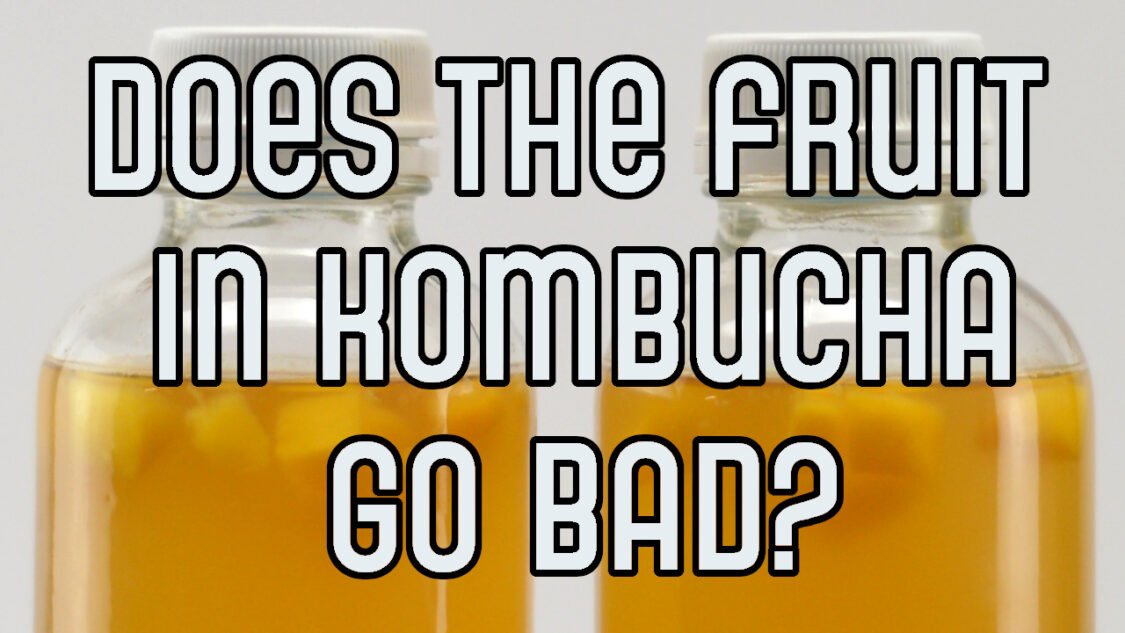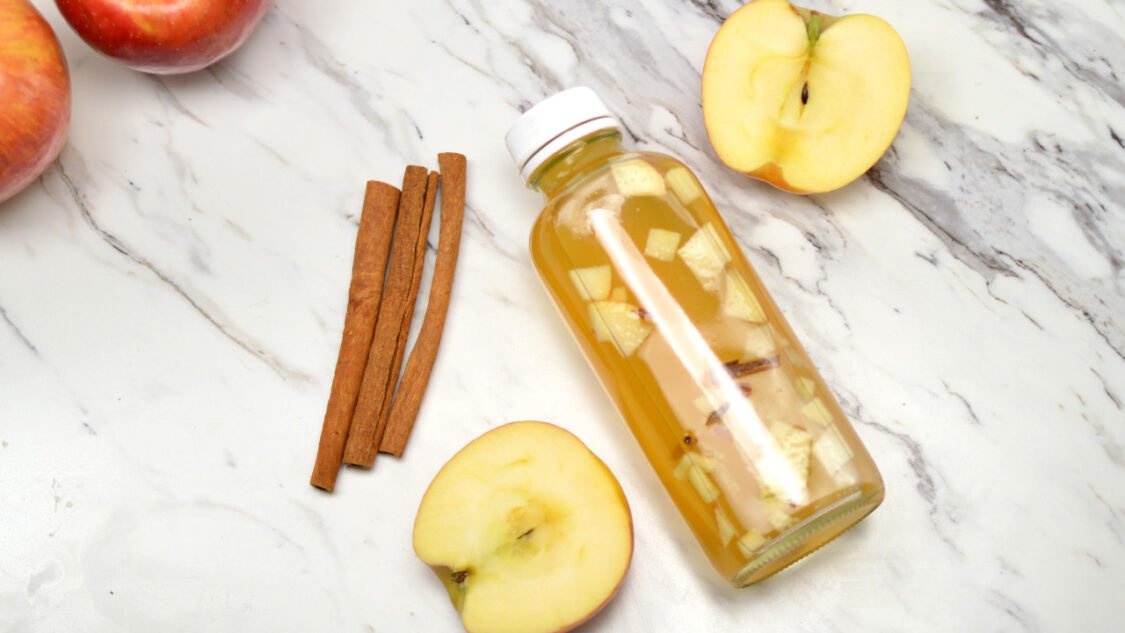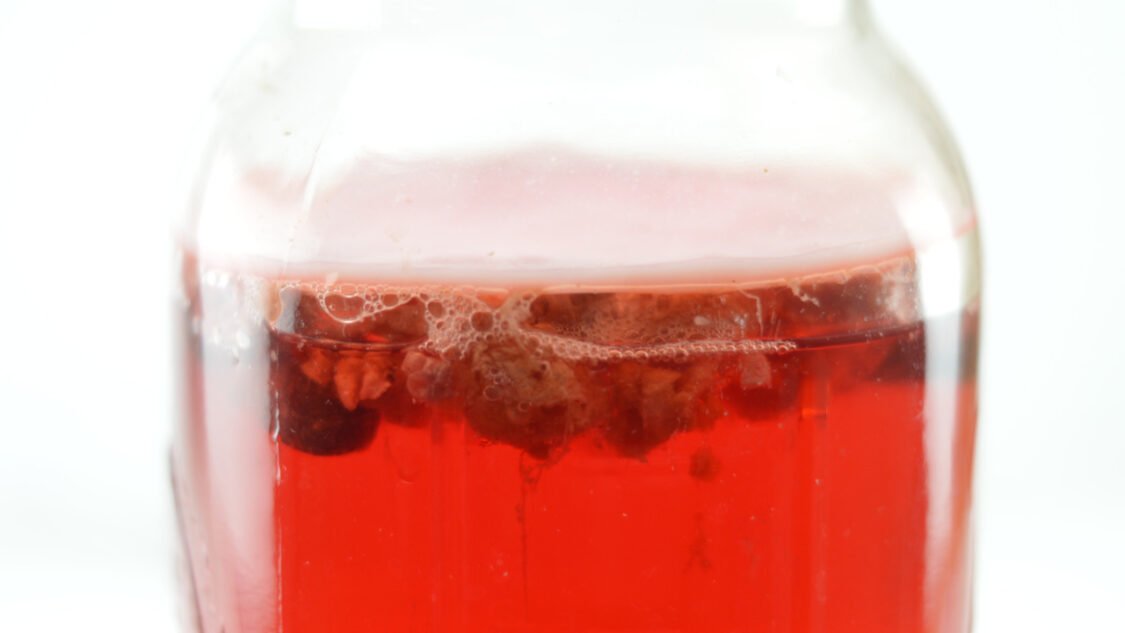Does the fruit in kombucha go bad?
After carefully brewing your kombucha and letting it ferment, you added fruit for additional flavor and now wonder if you need to remove it before it goes bad.

You spent time to learn about brewing kombucha, acquired the needed supplies and equipment then spent the time to grow your own SCOBY. Next you went through the first fermentation process and decided what you wanted the final flavors to be and added fruit to the secondary fermentation.
Now you are faced with several bottles of delicious kombucha with fruit in each bottle and are wondering “does that fruit go bad?”, “will it spoil the kombucha?” or “how do I get it out?”
Does the fruit in kombucha go bad?
No. If everything is done correctly, the fruit in kombucha doesn’t go bad and will not ruin the kombucha.

Why Fruit in Kombucha Doesn’t Go Bad
When you add fresh or frozen fruit to your kombucha, you are putting the fruit into an acidic environment that should be free from molds and unwanted bacteria. The acidity of the kombucha will prevent the fruit from rotting while the yeast present in the kombucha works to consume the sugars in the fruit. In a way you are preserving or pickling the fruit, and it will not go bad.
When secondary fermentation is complete and the kombucha has the desired flavor and carbonation profile, store the bottles, fruit and all, in the refrigerator to stop the fermentation. Your kombucha will stay good in the fridge for several months.
If mold was going gain a foothold, it almost always occurs during primary fermentation when there are more sugars available for the mold and the pH is not as acidic. The presence of more sugar and a higher pH are risk factors for mold to take hold.
Can You Eat the Fruit Pieces in Kombucha?
Yes, you can eat the fermented fruit pieces used to flavor your kombucha. They will have taken on some acidic notes from the kombucha, not be as sweet since the yeast “ate” many of the sugars and the texture will be much softer.
If you would prefer to avoid the “pickled” fruit you can simply strain the fruit out before serving. Strain into a clean fermentation bottle and store without fruit or pour the kombucha through a mesh sieve directly into your serving glass and enjoy.
Alternatively you can use a third fermentation and keep the fruit out of your bottles altogether.

Helping you learn to brew kombucha, find inspiration for new kombucha flavors and use kombucha to make kombucha mocktails




